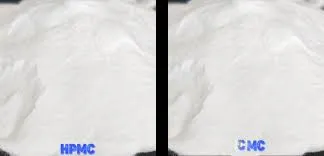
Nov . 27, 2024 02:54 Back to list
Investigating the Solubility of HPMC in Ethanol for Pharmaceutical Applications
Solubility of HPMC in Ethanol
Hydroxypropyl methylcellulose (HPMC) is a versatile polymer predominantly utilized in pharmaceutical, food, and cosmetic industries as a thickening, binding, and film-forming agent. One of the critical aspects of HPMC's application is its solubility characteristics in various solvents, including ethanol. Understanding the solubility of HPMC in ethanol is crucial, especially given the increasing interest in using this polymer in drug formulation and other applications.
Introduction to HPMC
HPMC is a non-ionic, water-soluble cellulose ether derived from the modification of natural cellulose. The introduction of hydroxypropyl and methyl groups enhances its solubility and functionality in various mediums. HPMC is known for its excellent film-forming properties, stability under various pH conditions, and compatibility with numerous substances, including surfactants and other polymers. These attributes make it an ideal candidate for applications such as controlled drug delivery systems, coatings for tablets, and stabilizers in emulsions.
Solubility Characteristics of HPMC
The solubility of HPMC is influenced by several factors, including the degree of substitution, molecular weight, and the nature of the solvent. HPMC's solubility is primarily observed in water due to the presence of hydroxyl groups that can form hydrogen bonds with water molecules. However, it exhibits varying degrees of solubility in organic solvents, such as ethanol.
Ethanol is a polar solvent with a relatively low dielectric constant compared to water. Its molecular structure allows it to interact with HPMC through hydrogen bonding, which can facilitate the dissolution process. However, the degree of solubility of HPMC in ethanol remains lower than that in water. This is primarily due to the hydrophilic nature of HPMC, which prefers to interact with water molecules rather than ethanol.
Implications of HPMC Solubility in Ethanol
hpmc solubility in ethanol

The solubility of HPMC in ethanol has significant implications for its application in pharmaceutical formulations. For instance, HPMC serves as a controlled-release agent in drug delivery systems. In such applications, the polymer's interaction with the solvent plays a critical role in determining the release profile of the drug. While water is the most common solvent in formulations, the use of ethanol could be beneficial in specific scenarios, such as when formulating lipophilic drug compounds.
Using ethanol as a solvent can influence the viscosity, gel strength, and clarity of HPMC solutions. Ethanol can alter the gelation properties of HPMC, which is pivotal when designing sustained-release dosages. Employing HPMC in ethanol-based formulations can be advantageous in enhancing the stability of the active pharmaceutical ingredients (APIs) and improving the overall efficacy of the drug delivery system.
Factors Affecting Solubility
The solubility of HPMC in ethanol is also affected by various factors, including concentration, temperature, and the presence of other ingredients. Increasing the temperature typically enhances solubility, as higher temperatures can increase molecular motion and disrupt intermolecular interactions. Additionally, the concentration of HPMC can influence the saturation point and, consequently, the solubility limit in ethanol.
In formulations where HPMC is used as a thickening agent, the right concentration must be precisely adjusted. An excessively high concentration could lead to gel formation, which may not be desirable in all applications. The presence of co-solvents can also affect solubility. Adding small amounts of water to an ethanol solution can significantly enhance the solubility of HPMC, combining the strengths of both solvents.
Conclusion
In summary, the solubility of HPMC in ethanol is an important consideration for its applications in pharmaceuticals and other industries. Understanding the interplay between solvent characteristics and polymer properties can guide formulators in creating effective products. While HPMC demonstrates limited solubility in ethanol compared to water, its unique characteristics still present opportunities for its use in ethanol-based formulations, particularly in enhancing drug release profiles and stabilizing formulations. Ongoing research and development in this area may unlock new applications and improve existing formulations, making HPMC a valuable component in modern formulation science.
-
HPMC for Tile Adhesive: Superior Bonding & Workability
NewsAug.30,2025
-
Premium Cellulose Ether: Effective Liquid Thickener Solutions
NewsAug.29,2025
-
HPMC for Tile Adhesive: Enhanced Bonding & Workability
NewsAug.28,2025
-
tile-bonding-additives-for-stronger-bonds
NewsAug.22,2025
-
construction-grade-rdp-for-wholesale-needs
NewsAug.22,2025
-
trusted-hec-supplier
NewsAug.22,2025







